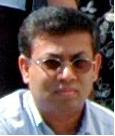Following is an extract from Indian President Kalam's Republic Day speech echoing the same concerns I raised in India's blog in 2020.
Changing Pattern of Society
When the world moved from the industrial to the information and knowledge era, we witnessed a changing pattern in the sectoral share of Gross Domestic Product and the number of people employed in each sector. The share of GDP percentage has undergone a considerable change. The contribution of agriculture to India's GDP has reduced from 39 percent to 22 percent during the period 1979 to 2004. During the same period, the gift of the manufacturing sector has moved from 24 percent to 27 percent, whereas the assistance of the service sector has increased from 37 percent to 51 percent. There has been considerable change in the employment pattern. The percentage of people employed in agriculture has decreased from 64 percent to 54 percent. Simultaneously, the percentage of people engaged in manufacturing has increased from 15 percent to 19 percent, and in the service sector from 20 percent to 27 percent. This trend has to continue, and by 2020, our employment pattern should aim at 44 percent in agriculture, 21 percent in manufacturing, and 35 percent in service sectors. The displacement of 10 percent of people from the agriculture sector has to be facilitated through skill enabling for undertaking value-added tasks in rural enterprises to reduce migration to urban areas. Instead of people from rural areas going to urban towns in search of jobs in the manufacturing and services sectors, PURA (Providing Urban Amenities in Rural Areas) will facilitate the creation of employment in rural areas. PURA achieves this by providing physical, electronic, and knowledge connectivities to a cluster of villages, thereby leading to their economic connectivity and prosperity.
National Employment Status
The National Rural Employment Guarantee Bill 2004 was tabled in Parliament in its last session to create employment opportunities in the rural sector. What is needed is coordinated planning and linking this Bill's spirit to productive and sustainable employment generation schemes for the unemployed youth. Now, I would like to discuss the national employment scenario.
As per the estimates of the Planning Commission, the total number of people eligible for employment currently is approximately 400 million. Out of this, nine percent are unemployed, around 36 million. In addition, there is a need to find value-added employment for 10 percent of those employed in the agriculture sector in rural areas. Our attempt is to find gainful employment for around 76 million people. This will add to our productivity and ensure a sustained 10 percent GDP growth for the decade, an essential need for
Dear Citizens, a nation of a billion people that is capable of exporting foodgrains, a nation that is recognized for its software products and services, a nation that can build its own aerospace systems and nuclear power plants, a country that is leading in the pharma and automobile industries, I am sure, will be able to put all its think tanks together and come up with many innovative wealth generating schemes for the productive employment of 76 million people.




No comments:
Post a Comment